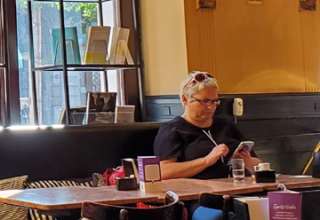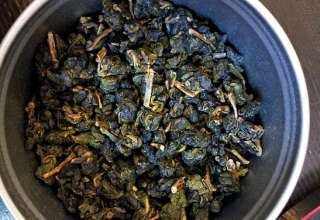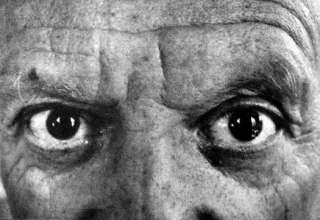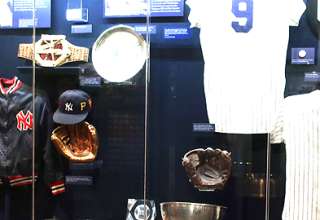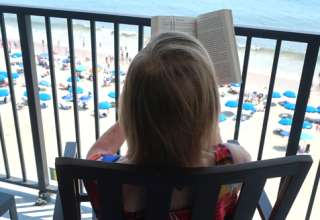Story and photos by Gary Singh
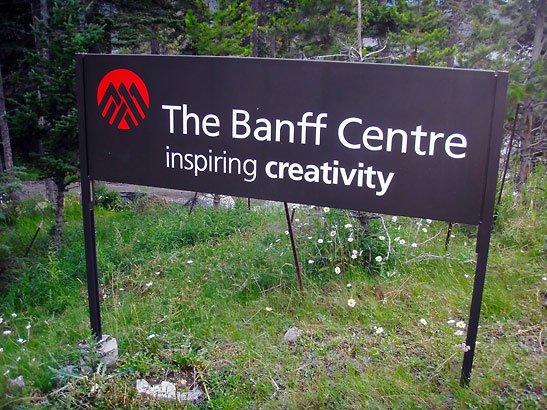
Banff Avenue in the roaring heat, in the town of the same name, in the summer of 2012. Vacationers paraded up and down the finely-swept sidewalks. They wore shorts, pushed double-strollers, devoured ice cream and took photos of the cranky mountain peaks. While scrambling to replace camera batteries, parents and their teenagers looked for bison burgers or killed time until a $75-dollar fondue extravaganza of snake and alligator. A seemingly endless traffic jam of car-jeep-crossovers-green, maroon, black, red or blue-but all very outdoorsy-looking and many with canoes or kayaks strapped to their tops, honked every two seconds, each making illegal left turns or looking for parking where there wasn’t any.
Yet the cranky mountain peaks oversaw everything, especially in the back streets, where I stole a glimpse. I too snapped a few shots.
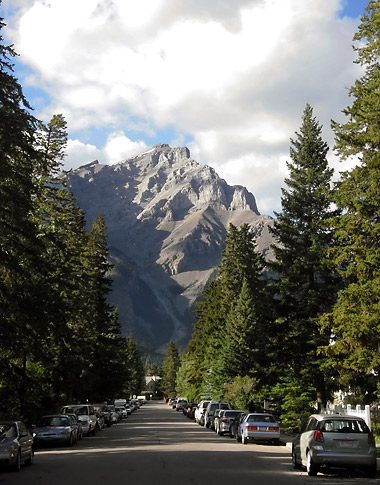
Cyclists appeared everywhere too. Spandex-clad athletes, either in packs or just resting in the public spaces, were omnipresent. One gray-haired cyclist from Calgary, a guy about 50, covered in multicolored spandex, asked the woman at the information booth if there was a Quiznos sandwich place anywhere near here. She said no, only Subway, so he settled for instructions on how to find it. Harumph, he said.
Behind us, the cranky mountain peaks seemed to know they would outlast all the tourists. And the cyclists. And the car-jeep crossovers.
I wound up a block down the street, to the sound of a steel drummer doing Brahms and the earthy aroma of burning hickory in a sidewalk display-fireplace while I scoped out a public artwork: Three raven sculptures, each on a thin 30-foot-tall pedestal, surrounded a large cement area, circular and open. You know the Maltese Falcon, the jade bird Bogey gunned for in that flick? That’s what the ravens looked like. The hardened detail. The austere menacing profile, both ominous and delicate. One raven stared downward from his post, one gazed forward, and the third one looked upward, although slightly hidden by a few tree branches.
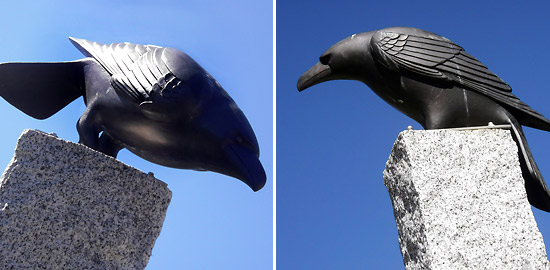
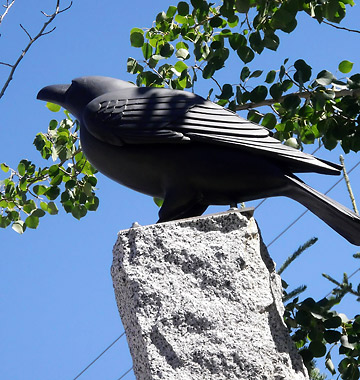
It didn’t feel like I ‘discovered’ the ravens. On one hand, yes, I asked the woman at the info booth after reading about the ravens in her brochure, but it felt like the birds discovered me instead. This wasn’t easy. The third raven, for example, found me as I was looking for the other two. The brochure hadn’t described the birds, just that three of them stared down on Banff’s Heritage Square, which, turned out, sat right behind the steel drummer and the smell of burning hickory.
Among a slew of other things, ravens represented the Jungian Shadow, the darker side of the psyche. Writers inspired by serendipity often insisted on a life of travel for precisely this reason: to weave separate contexts together; to experience a heightened sense of awareness; to discover their own multidimensional selves. And the raven was a symbol of creativity, magic and finding balance — perfect for a traveler on Banff Avenue.
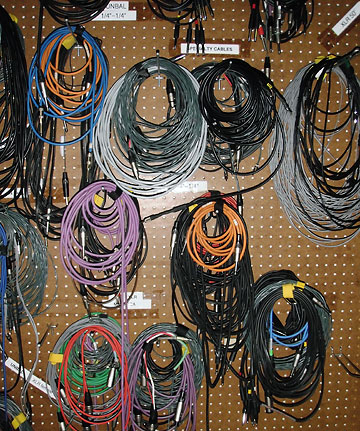
in order to find balance.
Raven imagery followed me for the rest of the trip. Creativity shifted into high gear and dominated the scene, beginning with the Three Ravens Restaurant, just one component of the Banff Centre, a world-renowned collaborative arts incubator and conference facility luring creative types from all over the world. Steeped in First Nations iconography, the landscape of this place inspired anyone who visited. It was a multidimensional, experiential vortex, a synesthetic interaction of different creative disciplines. Dancers collaborated with sound artists. Composers pooled resources with Processing programmers. Painters, sculptors and ceramicists set up shop and reaped influence from the staggering scenery enveloping the entire campus.
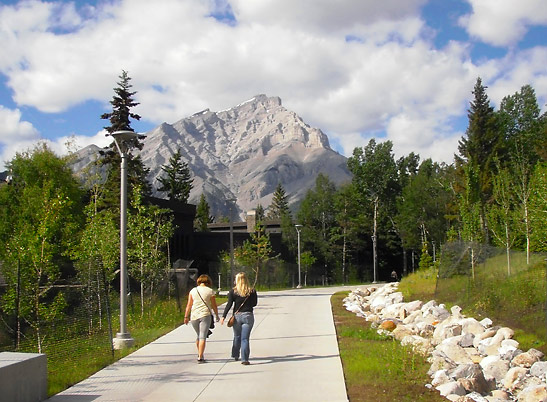
For example, music students coming here for work-study programs could even utilize “practice huts” integrated into the wilderness across the parking lot from the music building. As I skulked around the area, I heard students practicing trombone, piano and cello. A deer sauntered by for half a second. At more than one moment, a raven flew overhead.
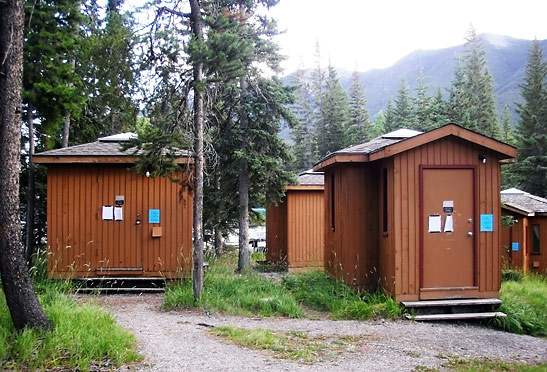
The Banff Centre hosted numerous artist residencies all year long. Creative types made their way here and thrived in a visionary environment that placed them in constant contact with other artists, writers, researchers and other passionate, focused people. I was envious of anyone with passion and focus, so maybe that’s why I was here.
But categories didn’t matter. Creativity did. Everyone seemed to play off each other’s presence.
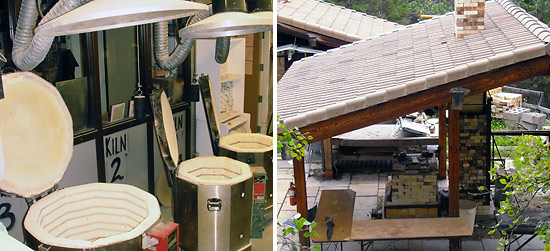
The aptly titled Kinnear Centre for Creativity & Innovation opened two years ago. On the wall inside the Maclab Bistro were the words, “May creativity, collaboration and friendship flourish in this place.” Even the employee vans were crafted with the tagline: Inspiring Creativity.
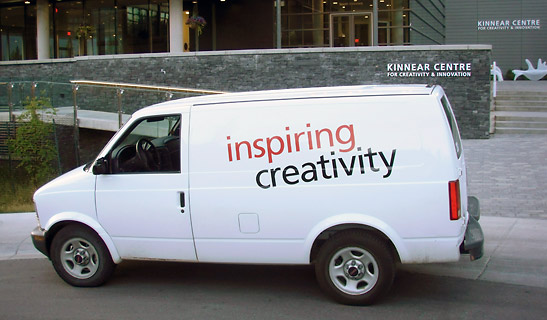
The Three Ravens restaurant, I was told, opened in 2008. The name was chosen from a staff contest. Maybe the raven watched over the Banff Centre in ways only the indigenous masters would understand. It was a magical, inspiring place. Roaming this campus, one was destined to create. The muses of serendipity would emerge, helping anyone to resolve his or her inner conflicts through creativity-precisely the mechanisms ravens tended to catalyze, according to the ancient archetypes.
Speaking of archetypes, during one particular aimless drift, I randomly ascended the staircase in the Paul D. Fleck Library & Archives, only to see a complete set of Carl Gustav Jung’s works, right there, at the top of the stairs. My gaze went straight to it. I had made the ascent, arrived at the top, and there he was. Jung. All of him. Talk about symbolism. I couldn’t have planned it better. I couldn’t have planned it at all.
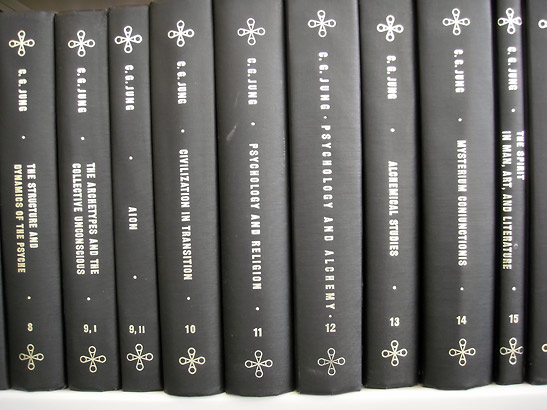
The Banff Centre integrated me into its interdisciplinary arts and innovation vortex for what seemed like only a few brief days, but during my short experience, so much transpired behind every door, I couldn’t keep track of it all: A group bus tour of 50 seniors stopped by to eat and explore. The audio designer Shawn Murphy was lecturing in the Film & Media department. I infiltrated opera rehearsals for both Don Giovanni and the Secret Garden. In another building, a week-long leadership development program was unfolding.
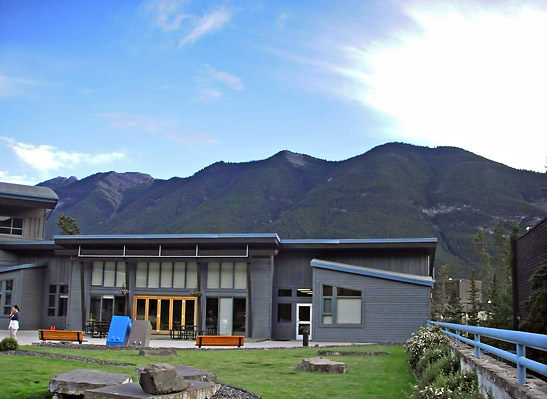
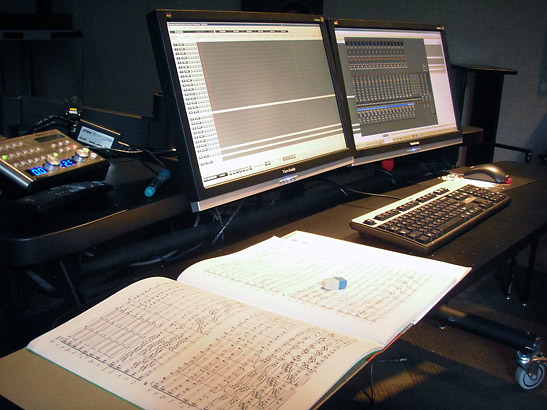
All around me, there existed master classes, workshops, gatherings, research and collective theorizing. At nighttime, over in the theater building, The Club, a 180-capacity Cabaret-style venue, was rocking and jammed to the gills.
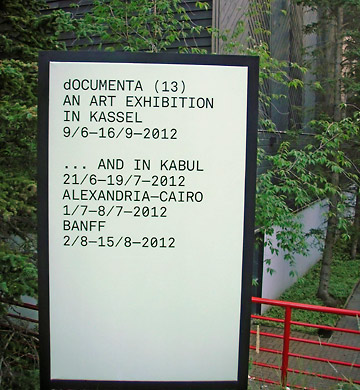
All the while, a special Banff Centre extension of dOCUMENTA (13), the provocative contemporary art exhibition in Kassel, Germany, also unfolded around me, as part of the Banff Research in Culture (BRiC) residency program. Scholars, radicals and cultural theorists exchanged ideas in all formats.
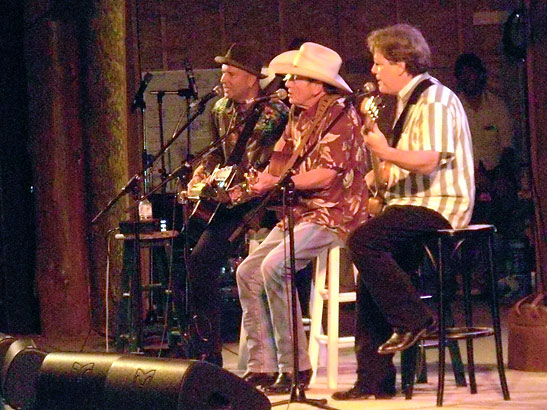
I departed the Banff Centre totally inspired, but I needed a coda, a final section of the symphony. Thus entered the Canmore Folk Festival, just down the highway, where I happened to witness a huge raven tearing up a dead animal in the middle of the road. The ravens in Alberta were gigantic, longer than my forearm.
At the festival, the legendary Ian Tyson talked on stage about his new album, The Raven Singer.
I’m not making this up. Neither did I know about this ahead of time, nor did I plan in advance to visit Second Story Books and randomly pluck a Mordecai Richler book off the shelf, only to see a raven on the cover. As I departed, I noticed the building next door was called Ravens Court.
I loved this stuff, worshiped this stuff, adored this stuff. Synchronicities were evidence of the muses at work. I was in the right place.
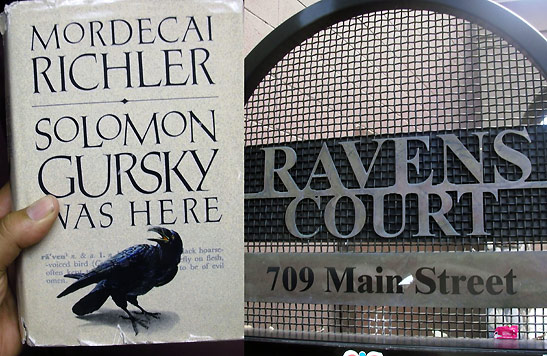
Even after I left Alberta proper, the ravens were with me everywhere. They were my friends, my brothers, my inspiration.


